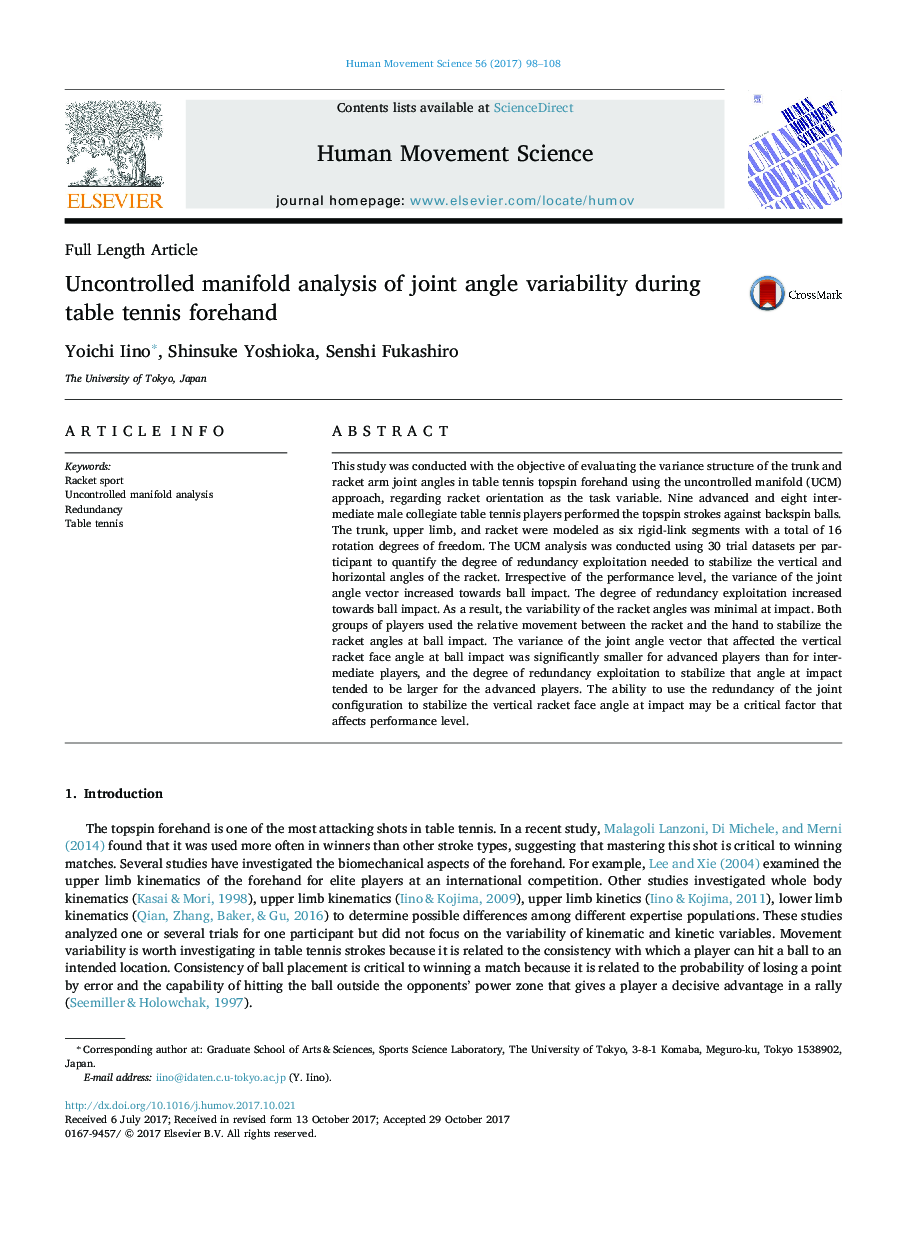| Article ID | Journal | Published Year | Pages | File Type |
|---|---|---|---|---|
| 7291025 | Human Movement Science | 2017 | 11 Pages |
Abstract
This study was conducted with the objective of evaluating the variance structure of the trunk and racket arm joint angles in table tennis topspin forehand using the uncontrolled manifold (UCM) approach, regarding racket orientation as the task variable. Nine advanced and eight intermediate male collegiate table tennis players performed the topspin strokes against backspin balls. The trunk, upper limb, and racket were modeled as six rigid-link segments with a total of 16 rotation degrees of freedom. The UCM analysis was conducted using 30 trial datasets per participant to quantify the degree of redundancy exploitation needed to stabilize the vertical and horizontal angles of the racket. Irrespective of the performance level, the variance of the joint angle vector increased towards ball impact. The degree of redundancy exploitation increased towards ball impact. As a result, the variability of the racket angles was minimal at impact. Both groups of players used the relative movement between the racket and the hand to stabilize the racket angles at ball impact. The variance of the joint angle vector that affected the vertical racket face angle at ball impact was significantly smaller for advanced players than for intermediate players, and the degree of redundancy exploitation to stabilize that angle at impact tended to be larger for the advanced players. The ability to use the redundancy of the joint configuration to stabilize the vertical racket face angle at impact may be a critical factor that affects performance level.
Related Topics
Life Sciences
Neuroscience
Cognitive Neuroscience
Authors
Yoichi Iino, Shinsuke Yoshioka, Senshi Fukashiro,
